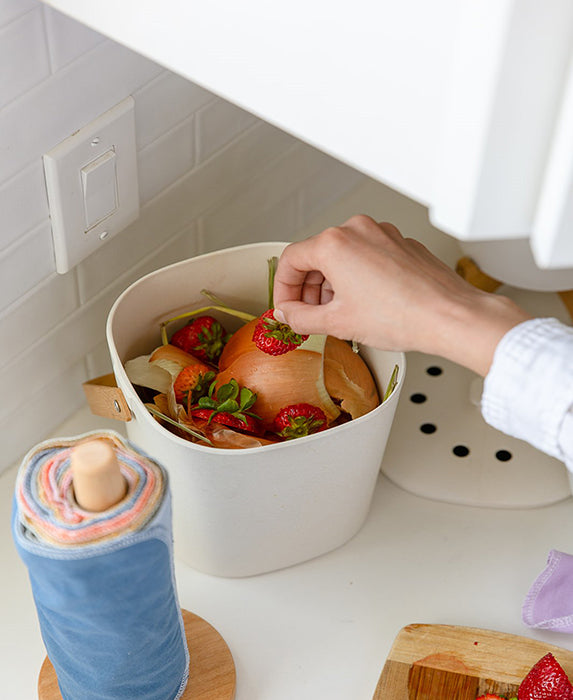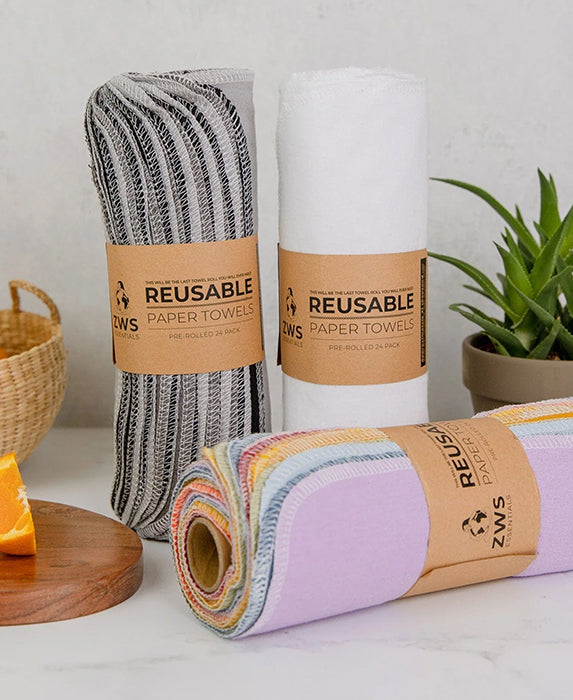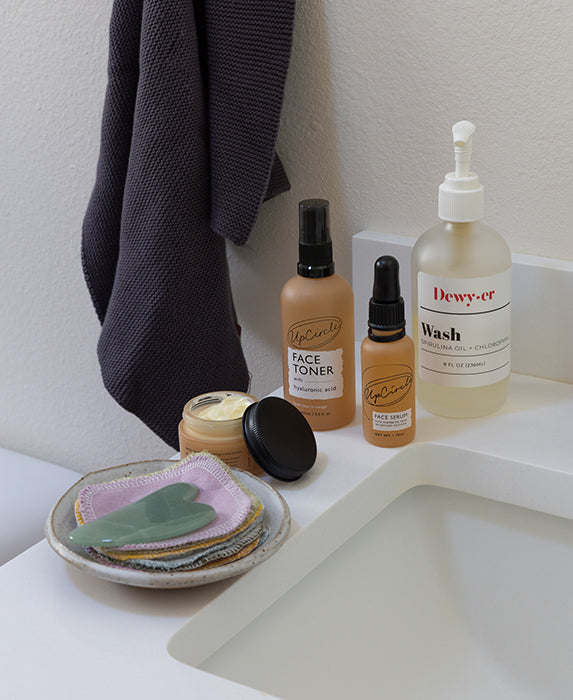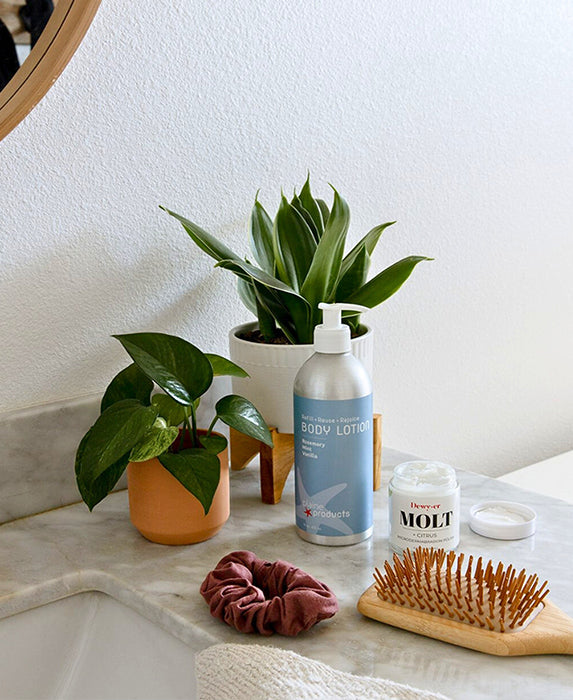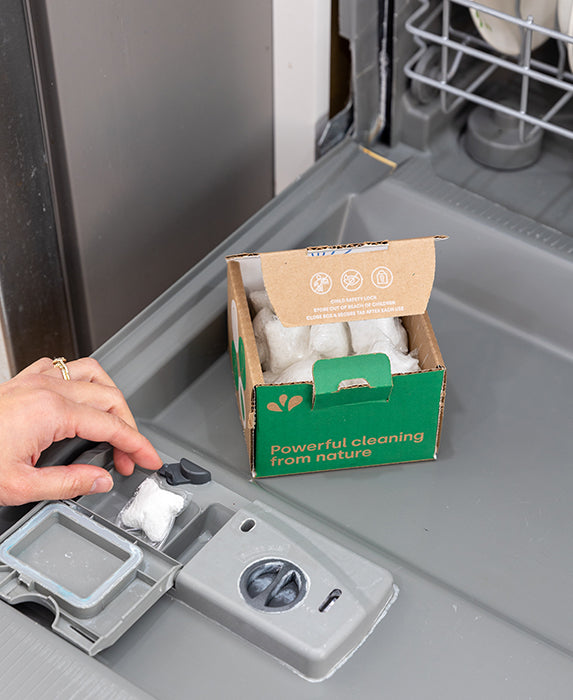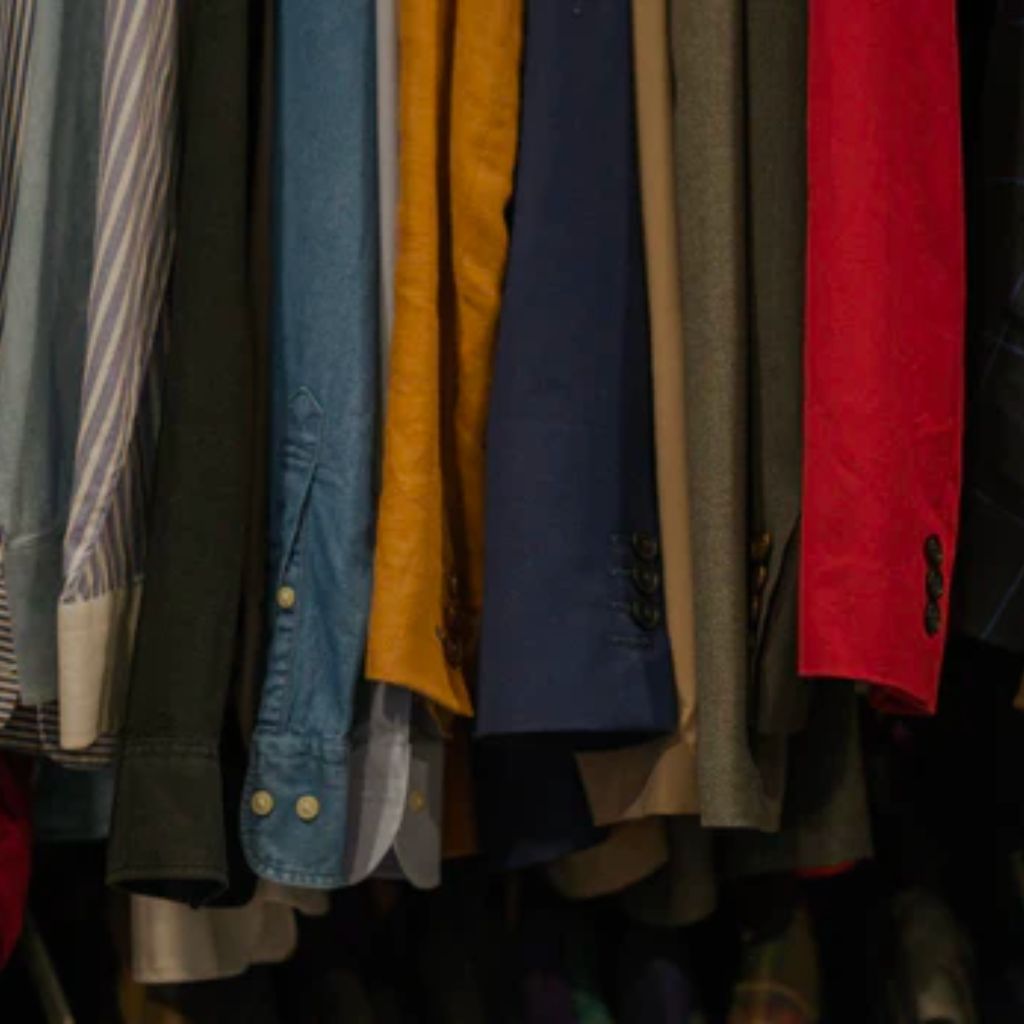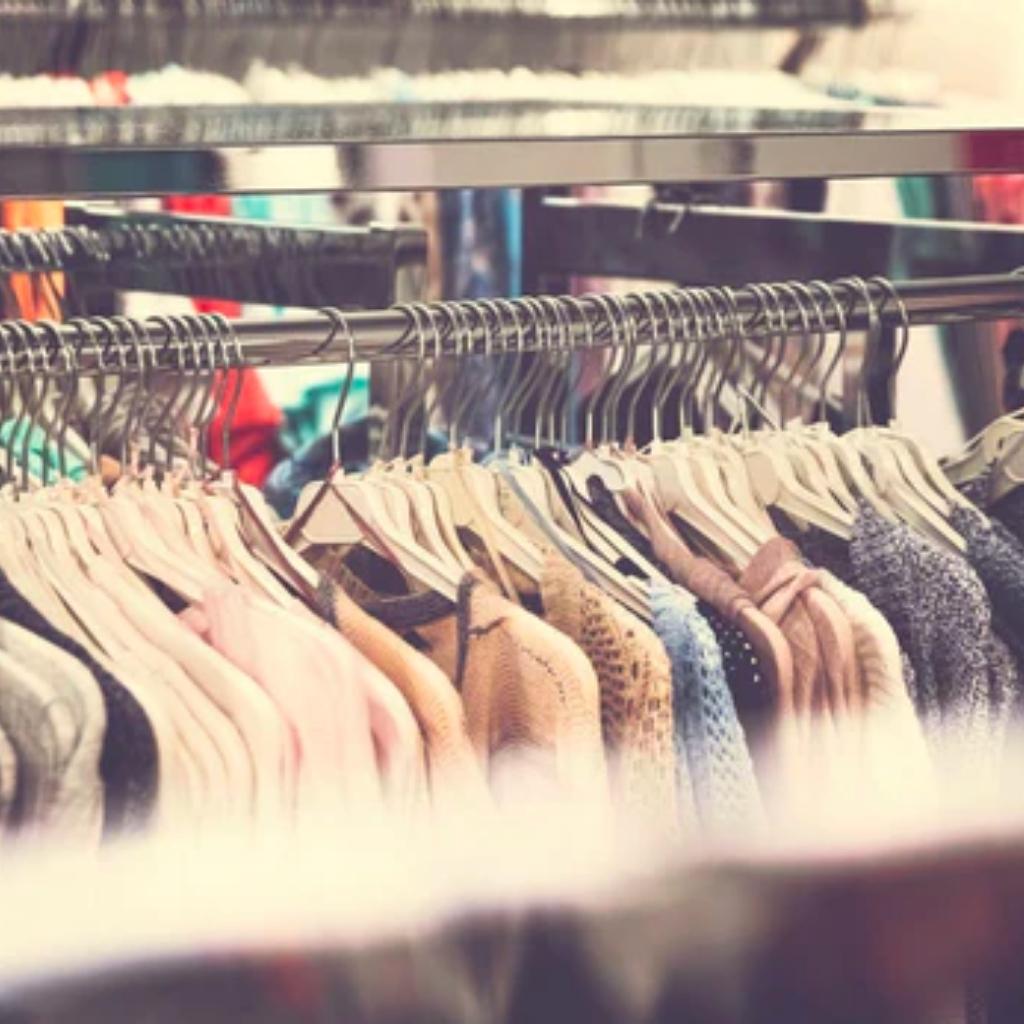As a conscious consumer, shopping for ethical clothing made with eco-textiles and sustainable fabrics can feel daunting. There’s so many options – and knowing which ones are best for both the planet and the people who produced it can be tough. In this blog, we’ll help you compare natural and synthetic fabrics, and learn about organic cotton, rPET, wood-pulp fabrics, wool, and more! Once you have all the facts, you can make an educated choice so that your fabric aligns with your values!
What you’ll learn:
- The major categories of sustainable textiles, and what they’re made out of
- Why certain textiles are better than others when it comes down to the impact on our planet
- How to choose the right fibers and fabrics for your lifestyle
Ethical Clothing: All About Eco-Textiles

Natural Fibers
Natural fibers, as you could guess, are made of plant or animal fibers that include cotton, hemp, linen, trees, wool, silk, leather, feathers, and more. These fibers do not produce microplastics when washed and if they are not treated or blended with any synthetic fibers, they will decompose and biodegrade. However, these breathable natural fibers can have resource-intensive production processes, and may not lend their attributes to certain styles or functions of clothing. Additionally, natural fibers from animals often find pushback from those focused on the treatment and health of the animals – which is why faux alternatives to leather, silk, wool, and more have been created!

Synthetic Fibers
Synthetic fibers are man-made and created from chemicals like petroleum, and include polyester, lycra, acrylic, nylon, fake leather, and more. These fibers go through a resource-intensive production process that often produces harmful byproducts which are often not disposed of properly and in turn, harm our ecosystems. Synthetic fibers will not biodegrade or decompose and they release microplastics, tiny plastic particles that enter our waterways when washed. Synthetic fibers are often used in clothing that needs to retain its shape and stretch, like activewear.
Now let’s get down to the nitty-gritty! There is no ‘super fabric’ that checks all of the boxes of sustainability, but by learning about these 5 common eco-friendly textiles, you can make the best choice for your lifestyle!
Organic Cotton (Natural)

Cotton is often seen as an American staple – but sadly it has earned the nickname ‘dirtiest crop on earth’ for good reason! Traditional cotton uses 16% of the world’s insecticides and $2 billion of pesticides each year, not counting the massive amount of land and water needed to produce it. Traditional cotton production also utilizes many neurotoxic chemicals to bleach, process, and grow the cotton – and all of those pesticides? They’re not great for the health of the cotton farmers and workers, either, or our ecosystems.
Unlike conventional cotton, organic cotton is handpicked while traditional cotton is picked with a machine. Hand-picked cotton doesn’t harm the cotton plant, so the fibers are longer and therefore softer. Traditional cotton farmers use GMO seeds to make their plants pest-resistant, but when the pests become stronger, stronger pesticides need to be used to fight them off. With organic cotton, the seeds are non-GMO and natural pesticides like ladybugs are used to fight off pests. Plus, organic cotton utilizes crop rotation to protect soil quality, while traditional cotton uses the same land plot – often stripping the soil of its nutrients, making it require more water in the long run due to poor soil health.
Pros:
- Organic cotton uses non-GMO seeds, no harmful pesticides, and protects the health of the workers, farmers, and the soil, air, and water quality of the ecosystem it’s grown on
- Wearing clothing made of organic cotton can mitigate skin sensitivities or allergies to chemicals found in traditional cotton garments, making it perfect for sensitive skin and children
- Organic cotton is more regulated than traditional cotton with a few certifications, and benefits both the environment and the lives of those who work with cotton
Cons:
- Organic cotton uses more water and land resources than traditional cotton – due in part because organic cotton uses non-GMO seeds which means more organic cotton needs to be planted to produce the same amount. That makes the water impact of a cotton t-shirt go from 290 gallons (traditional) to 660.4 gallons (organic)!
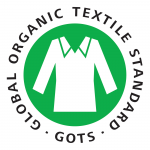
If you’re going to shop organic cotton, look for a certification like the Global Organic Textile Standard Certification (GOTS) – the world’s leading processing standard for organic textiles. The USDA has organic labeling too, requiring that all products labelled organic be produced with 100% organic crops, but their regulation ends there. The GOTS Certification has stringent environmental and social criteria as well so you can be confident that both your fibers and supply chains are ethical.
Recycled Polyester (Synthetic)
Do you own a swimsuit? Leggings? Anything with just a little bit of stretch in it? It’s probably polyester, one of the most popular fabrics for clothing because it is stretchy, easy to care for, and wrinkles less. But, virgin polyester is made from crude oil and is resource-intensive to produce. Despite the massive amount of resources needed to create this fiber, it is cost-efficient to use in products, which most companies love. If this fabric is useful to consumers and chosen by companies, yet harmful to the environment, what can we do about it? Enter recycled polyester, aka rPET.

In 2017 the nonprofit Textile Exchange challenged more than 50 retail giants to increase their use of rPET to by ¼ by 2020. Their October 2018 statement reported that many of these giants had met and exceeded the goal two years before the deadline, and had even encouraged more companies to join the challenge! They predict that 20% of all polyester will be recycled by 2030, which is huge news. PET plastic is one of the most abundant types of plastic used today: think peanut butter jars, water bottles, mouthwash containers, etc. Recycled polyester is created by taking these items, cleaning, shredding, and melting them into a fiber that can be woven into new fabric. Learn more about the process here!
Pros:
- PET plastic is easy to recycle and is found in many common products, meaning we have plenty of raw materials to transform into rPET – while decreasing the amount of plastic waste entering our landfills!
- A bottle made from 100% recycled material uses 75% less energy to produce than a virgin PET bottle, and protects ecosystems that are exploited during oil and gas production to make virgin PET
Cons:
- Recycled polyester is still plastic and doesn’t escape the downsides that come with plastics, including microplastics. This means rPET is best suited for non-washable products like bags and rugs!
- Producing rPET uses less energy and resources than virgin PET, but it still releases some harmful compounds into the environment when melted down into pellets that need to be monitored closely
Our final verdict? If you need to buy items made from polyester, choose recycled polyester when you can!
Wood Pulp Based Fabrics: Viscose/Rayon, Modal, and Tencel (Natural but Man-Made)

Wood pulp? Isn’t that what paper is made of? When wood pulp from Birch, Oak, and Eucalyptus trees is added to a chemical soup to soften it, then broken into small pieces, filtered, and spun into thread, it can be turned into a fabric! Because the basic ingredient in these fibers is wood, it would seem that this is a natural fiber. However, because chemicals are required no matter what to create this fiber, it is also a partially man-made fiber. Viscose/Rayon, Modal, and Tencel are all made from these same basic production steps, but have differences.
Pros:
- Fibers made from wood pulp are biodegradable, and are treated with chemicals that are non-toxic and can be recycled back into the manufacturing process
- Wood pulp fibers are less time-consuming to cultivate when compared to other man-made fibers, ringing in at about two hours from start to finish!
- They can be naturally wrinkle-resistant, are safe for sensitive skin, and drape-able and flexible
Cons:
- These fibers tend to be more expensive than traditional man-made materials or traditional cotton
- Because these fibers rely on trees, a dwindling natural resource, the forests that source the raw materials must be managed responsibly and sustainable harvest their wood
- These fibers do not all function the same, and therefore cannot be interchanged. Eileen Fisher has a wonderful description of their struggles with Viscose and Tencel, and keys the consumer in on what they are doing and why.
Hemp and Linen (Natural)

Hemp is a highly debated topic these days! Is it legal? Is it safe? Yes and yes! Industrial hemp is different than marijuana and is THC-free, safe, and is non-psychoactive. Check out our blog post dedicated to hemp here to learn more! Hemp is often referred to as a ‘miracle crop’ because it doesn’t require pesticides to grow, produces more product in less time with less land, and can grow in a variety of soil types and climates. Additionally, parts of the crop not used for the fiber creation can be used to make other products, like concrete!

Hemp’s cousin, linen, has many of the same attributes. Linen is made from the flax plant, and like hemp, it is hardy and grows without the need for intense pesticides and uses less water than traditional cotton. To sweeten the deal, linen fabric production uses significantly less energy than the production processes of traditional cotton or synthetic materials.
Pros:
- Hemp is x3 stronger than cotton, and linen can absorb 20% of its weight in moisture, making them both hardworking and durable materials for eco-textile clothing
- Hemp and linen can grow in a variety of soil and climate types and are high-yield crops, meaning that they produce more product with less land. In fact, hemp can produce 250% more than traditional cotton in the same amount of land!
- Unlike the production of other materials, the parts that are discarded while making hemp and linen textiles have many other uses: flax milk, flax seeds, hemp oil, hemp paper, etc!
- Both linen and hemp are biodegradable, and don’t release microplastics
Cons:
- Hemp and linen tend to wrinkle more quickly because they are not treated with the same chemicals that our ‘wrinkle-free’ and ‘non-iron’ shirts are.
- The standards for producing linen differs greatly depending on where it is grown. Linen from Europe, like the kind we carry, and Japan tend to have more rigorous environmental legislation, making the process more environmentally friendly. However, when linen is not produced this way, there is a risk of chemicals being released into the environment.
Wool (Natural)

What comes to mind when you think about wool? Your dad’s wool socks, or maybe mom’s chunky wool sweater? Wool is a natural fiber, so it has extreme breathability, but can also keep you extremely warm by capturing escaping body heat. Wool fiber for eco-textiles can come from different animals, but we’ll be focusing on sheep wool. Because this fiber is sourced from an animal, some people are hesitant to utilize items made of this fiber because of animal welfare and cruelty-free concerns, and rightfully so! People following a vegan lifestyle may be for or against wool depending on its sourcing, as regulations regarding the treatment of the sheep differ depending on where the wool is sourced.
Pros:
- Wool is a natural fiber and renewable resource, meaning it will biodegrade, is highly moisture-wicking, and won’t release microplastics when washed!
- When wool is produced responsibly, the sheep aerate the soil and maintain soil nutrition while grazing, which is awesome for our ecosystems
- Items made out of wool are extremely durable, insulating, and can retain up to 30% of their weight in moisture without feeling damp! Plus, wool items can be washed less often than their counterparts because they do not retain smells like a synthetic fiber would.
Cons:
- Pesticides can be used in traditional wool production if not regulated by the country the wool is produced in. This is why it is important to search for organic or otherwise certified wool whenever possible! Luckily, we have sustainability logos on all of our products so you can confidently shop your values!
- Wool items may need to be specially laundered to protect their properties and keep their proper shape. These processes can be more resource-intensive than typical laundering, but luckily you do not need to wash wool garments as often.
- Certain countries perform shearing practices in a way that is often painful and bad for the sheep, such as mulesing, the practice of cutting off pieces of the sheep’s skin – ouch!- to prevent an infection that is manageable in other ways. This is why some people concerned with animal rights tend to avoid wool products.

Wool products from EarthHero are all cruelty-free and non-mulesing guaranteed so you can feel good about using wool in your life! Choosing wool that is sourced from countries (like New Zealand!) that enforce laws to protect sheep is one of the best ways to enjoy this eco-textile worry-free. Another opportunity to ensure that your wool is sustainable and cruelty-free is to find certified organic wool, which takes the health and wellbeing of the sheep, environment, and production processes into account, or certified cruelty-free wool. Buying local wool products is another way to use a sustainable wool product because small-scale producers like family farmers tend to have fewer ethical issues than large-scale producers.
Thanks for exploring our crash course of sustainable fibers and fabrics! Each eco-fabric has its own pros and cons – and it’s up to you to vote with your dollar for what you believe in depending on your lifestyle + values!
Want to find the latest discounts on EarthHero products? Check out our page on WeThrift here!

